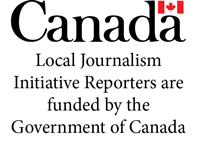After six days of apologies by the leader of the Roman Catholic Church for the horrendous abuses perpetrated on Indigenous children and families through the residential school system in Canada, come the questions.
The main one is, did the repeated apologies offered by Pope Francis go far enough?
Mere words, however sincere, could never make up for cultural genocide. The Canadian residential school system was a network of boarding schools for First Nations, Métis and Inuit children that operated for over 100 years. Funded by the Canadian government, many of the schools were operated by various religious denominations. The Catholic Church operated 60 per cent of the schools. The system was created to forcibly assimilate the children into the dominant Canadian culture. It is estimated around 150,000 children were placed in the schools over the decades. Contrary to what a lot of non-Indigenous Canadians think, this was not something that happened generations ago; the last school closed in 1996.
The Pope’s visit raised hopes that he would say something to help heal the many who are still suffering.
Some have said the apologies missed the mark in a number of ways. The Pope did not rescind the 15th-century Doctrine of Discovery, by which the church claimed the right to colonize the lands of non-Christians and enslave the non-Christians found in those lands.
“Rescind the Doctrine” was written on the banner that stretched across the front of the Basilica of Sainte-Anne-de-Beaupré. The Doctrine may no longer represent the views of the Catholic Church, and has not done so for centuries, but the presence of the banner is graphic evidence that it still weighs heavily on many hearts.
The wording of the Pope’s apologies continued to frustrate many – as he put it, the abuses were “perpetrated by many Catholics,” not “by the Roman Catholic Church.”
That said, the Pope finally did use the word “genocide” to describe what the schools did, after his pilgrimage of penance was over. The word was one that people had been waiting to hear, and they did, finally, when the Pope spoke of families torn apart; little children deprived of the love and guidance of their elders, even their own language, and all too often, their very lives; and the systematic effort to erase the rich cultures and traditions of Canada’s original peoples.
One gets a sense that even the Pope understands that his pilgrimage of penance is only a beginning. He referred to “crimes that require firm action” in reference to sexual abuse of children by members of the clergy, which have come to light fairly recently.
There are hopes that concrete action might also involve the release of documents that would help families find out what happened to the many children who never returned home from the residential schools.
In the opinion of many, action in the form of financial settlements would go a long way toward healing. However, it starts with the long-awaited apology.
After every word spoken by Pope Francis is examined, written about and discussed in the coming days, perhaps the nature of the apology will become apparent. An apology does not involve one party, or many parties, but two – the person who speaks it and the person or group to whom it is spoken.
It will not be up to those who photographed, recorded and debated the events of the Pope’s visit to decide whether the words went far enough, whether they are a good beginning for a path of healing and reconciliation, for a way forward. It will be up to the survivors of the residential school system, their children, and their grandchildren to decide.
It is to them that the words were spoken.
The events of the Pope’s visit and the media coverage that has followed have triggered many difficult emotions among residential school survivors and their families. Help is available. If you are in need of support, call the 24-hour National Indian Residential School Crisis Line at 1-866-925-4419.



